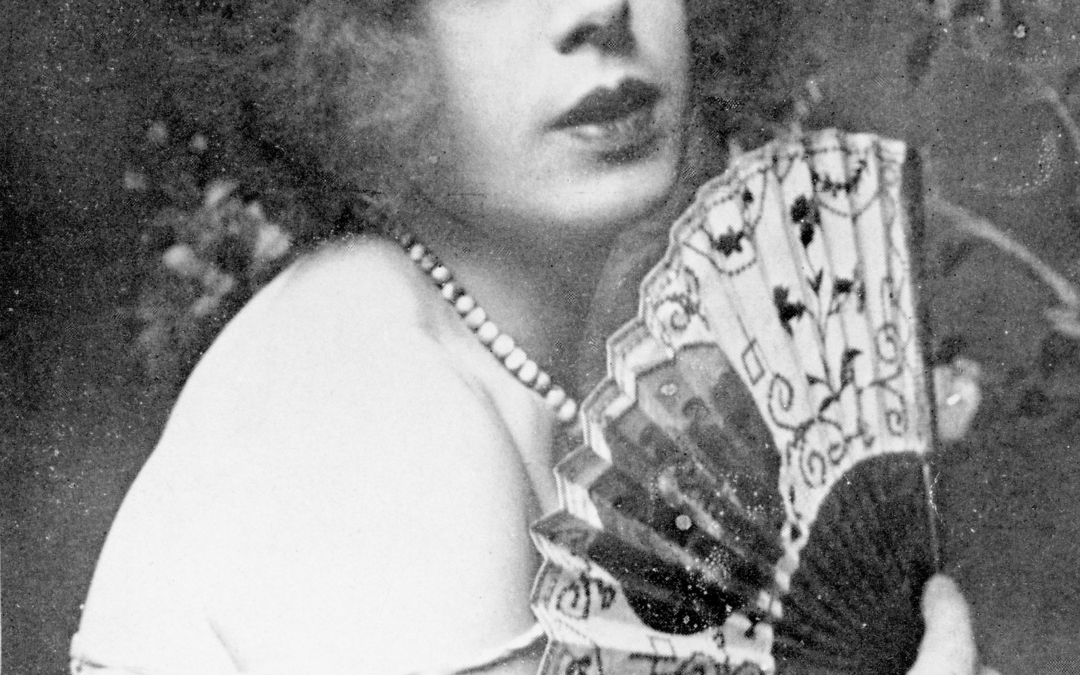The Stonewall Riots on New York City’s Christopher Street in June 1969 are widely regarded with igniting the contemporary LGBTIQ Rights Movement. Queer people fought against police brutality for days, resulting in the creation of Pride Marches worldwide. Between 1864 and 1933, however, Germany and Berlin witnessed the origins, the birth of “the World’s First LGBTIQ Emancipation Movement.” In the 1920s, this liberation movement was also tied to the birth of contemporary sexual science and the establishment of the world’s first institute of sexual science. Unfortunately, this movement had been lost to public memory for decades following the Second World War, destroyed by the Nazis in 1933. However, in recent years, this critical element of queer and LGBTIQ history has been rediscovered. It’s now available in Augmented Reality in the Berlin guided tour Berlin’s History of Sex!
1. Magnus Hirschfeld: The Founder of Modern Sexual Science
BerlinGuide.de offers a guided tour in Augmented Reality, which dives deeper into the life of Magnus Hirschfeld. The foundation of modern sexual science was heavily influenced by this German physician and sexologist.
The Early Years of Magnus Hirschfeld
Hirschfeld was born into a Jewish family in Kolberg, Pomerania (today: Koobrzeg, Poland). He studied philosophy and philology in Breslau (today: Wrocław, Poland) from 1887 to 1888, and medicine in Strasbourg, Munich, Heidelberg, and Berlin from 1888 to 1892. In 1896, he opened his practice in Charlottenburg, which is today a district of Berlin.
The Foundation of the World’s First LGBTIQ Rights Organization
Hirschfeld was treating many patients with depression. Struck by the number of depressive and suicidal patients struggling with their homosexuality and the fate of and trial against Oscar Wilde around the same time, Hirschfeld became an activist for LGBTIQ rights. In the guided tour about Berlin’s History of Sex, you’ll discover how, in 1897, in his flat in Charlottenburg, he co-founded the world’s first LGBTIQ rights organization: the Scientific Humanitarian Committee. One of its main goals was to abolish §175, which was criminalizing male homosexuality in Germany. The Scientific-Humanitarian Committee, led by Hirschfeld, garnered 6000 signatures from renowned Germans on a petition to remove the paragraph, including Albert Einstein, Hermann Hesse, or Käthe Kollwitz.
Hirschfeld was a feminist and believed that LGBTIQ rights were strongly connected with women’s rights. As such, he campaigned, for instance, against the criminalization of abortion and for – at the time – the controversial idea that women naturally also have sexual desires. In 1919, Hirschfeld co-wrote and acted in the film Anders als die Andern (“Different From the Others”), considered the world’s first gay movie. In 1920, Hirschfeld was almost beaten to death by homophobic and antisemitic nationalists.
“The Einstein of Sex”
“Justice through science” was not only the motto of the Scientific Humanitarian Committee but also of Hirschfeld’s life and work. As such, it’s not surprising that he would back up his activism for LGBTIQ rights with scientific research. Hirschfeld created a massive archive with several scientific studies and publications from various academic fields relating to sexuality. By that, he laid a cornerstone for the foundation of modern sexual science. Additionally, he published countless scientific papers regarding gender, sex, and sexuality. As a result, he significantly advanced the public’s understanding of these matters. And in 1919, he opened the world’s first institute of sexual science in Berlin-Tiergarten, whose former location you’ll visit in the guided tour about Berlin’s History of Sex.
2. Sexual Intermediairies
Hirschfeld identified, investigated, and catalogued many varieties of sexuality and gender identity, not just homosexuality. In the guided tour, you’ll discover his central theory of the sexual intermediaries.
43,046,721 Genders
Hirschfeld believed that in-between “purely male and female” are a variety of “in-betweens”. Hirschfeld drew on a whole series of characteristics that he arranges – for the sake of clarity – into four groups: the sexual organs, other physical characteristics, the sexual instinct, other psychological characteristics. In each individual, these trait areas tend to be more “masculine” or “feminine” in different combinations and gradations, and there are “sexual intermediaries” in various forms that can be broadly assigned to the four groups.
If one assumes that the four groups of characteristics can have three forms – namely “m” (male), “f” (female) or “m+f” (mixed-sex) – then there would already be 34 = 81 combinations of sexual characters. However, this number is still far too small because each of the four main groups could easily be divided into four subgroups, e.g. the sexual organs into individual body parts. With 44=16 such elements with three possible expressions, one obtains 316 or 43,046,721 sex types. Practically, Hirschfeld regarded sex and gender as a spectrum – long before the emergence of gender studies – and fought valiantly for the rights of LGBTIQ people, including trans*, intersex, non-binary, and gender non-conforming people.
“Transvestites”
In 1910, Hirschfeld coined the term “transvestite”, which, at the time, was an umbrella term for who we today would refer to as trans* people, drag queens, drag kings, cross-dressers, non-binary people, gender non-conforming people, and more. In his institute, Hirschfeld issued “transvestite certificates” to people to prevent them from being harassed by the police – as it was actually forbidden to publicly dress in clothing that wouldn’t fit your assigned sex unless you owned such a certificate.
The World’s First Gender Affirmation Surgeries
In 1906, German man Karl M. Baer became the world’s first trans* person to undergo gender affirmation surgery. Baer wrote notes for Hirschfeld on his experiences growing up trans* and, together, they worked up these notes into semi-fictional, semi-autobiographical memoirs published in 1907.
In 1930, Danish intersex trans* woman Lili Elbe, whose story you’ll also discover in the guided tour, went to Germany for a series of gender affirmation surgeries, which were still highly experimental at the time. The first surgery was performed under the supervision of Magnus Hirschfeld in his institute in Berlin. The fourth and last surgery was performed in Dresden in 1931. Elbe’s immune system rejected transplantations from the operation, and a subsequent surgical revision caused an infection, which led to her death three months after the surgery.
3. The Scientific Institute and the Sex Museum
In 1919, in Berlin-Tiergarten, Magnus Hirschfeld opened the world’s first institute of sexual science, which would soon become internationally renowned and influential!
Education, Therapy, and International Influence
As you’ll discover in the guided tour about Berlin’s History of Sex, several countries changed their laws around sexuality based on scientific findings shared at international conferences in the institute. In addition, Hirschfeld stored his vast sexuality archives and library at the institute and provided educational services and medical consultations, including further training for physicians and early versions of modern sexual therapy and marriage counselling.
A Home for Marginalized People
Hirschfeld himself lived at the institute, together with his partner Karl Giese. (Hirschfeld was polyamorous, and they would later have a threesome relationship with Chinese man Li Shiu Tong.) The institute also offered housing for marginalized sexual and gender minorities, including Lili Elbe and Dörchen Richter, another trans* woman to undergo gender affirmation surgery at the institute.
The Museum of Sex & Early Versions of Viagra
The institute also hosted the Museum of Sex, which served as a public educational resource. Here, Hirschfeld exhibited penis shoes, sex dolls, big masturbation machines for women, drawings by sadists and masochists, photographs of sexual tattoos, or a hair collection of a gay hair fetishist. In the guided tour, you’ll discover many photos from those exhibitions in Augmented Reality.
Hirschfeld didn’t reject people just because they couldn’t afford the services provided at the institute. Still, to help him finance this enormous endeavour, he invented two precursors to Viagra, which he was selling at the institute: “Testifortan” and “Titus-Pearls”.
4. The Eradication by Nazi Germany
Unfortunately, the Nazis put the international scientific progress and the world’s first LGBTIQ emancipation movement to a brutal end when they seized power in 1933.
The Attack on Science and the Nazi Book Burnings
Hirschfeld’s Institute was closed down less than four months after the Nazis assumed control. On the morning of the 6th of May, 1933, a group of university students from the National Socialist Student League assaulted the institution, yelling “Brenne Hirschfeld!” (“Burn Hirschfeld!”) and beating up the institute’s staff and destroying its property. In the afternoon, the paramilitary Nazi organization Sturmabteilung (SA) arrived at the institute. They launched a more systematic assault, removing all volumes from the library and storing them for the Nazi book burnings four days later, which you’ll be able to witness in the guided tour as well. The Berlin police arrived at the institution later that evening and declared it permanently closed.
Racism
Hirschfeld had already left Germany for a speaking tour that carried him throughout the world, and he never returned. Instead, he went into exile in France together with his two partners, Karl Giese and Li Shiu Tong. Shortly after, Giese was arrested at a public bathhouse, charged with “public indecency,” and sentenced to three months in prison. Giese’s French visa was revoked after his detention, and he was expelled from France in October 1934, which left Hirschfeld even more depressed.
Later that year, Hirschfeld moved to Nice while Li went to study abroad. In France, Hirschfeld finished “Rassismus“, a book against the Nazi’s racial theories he had been working on during his world tour. It was one of the first scientific publications ever to use the word “racism”, even though he believed in eugenic theories in his early years himself. Hirschfeld claimed that the book’s goal was to look into “the racial theory that underpins the doctrine of racial war,” and that he was “one of the countless thousands who have been victimized by the practical realization of this theory.”
He went on to say that the division of humans into biological races functioned as a manner of turning prejudices into a “universal reality” backed by pseudoscience. Hirschfeld believed that this was the foundation of Western thinking about modernity, with whites praised as the “civilized” race in contrast to other races, which were dismissed for their “barbarity,” and that such thinking was used to justify white supremacy.
Hirschfeld’s Death
Hirschfeld claimed further that the Nazi’s racism was only an extreme version of prejudices prevalent across the Western world and that the differences between Nazi ideology and racism practised in other countries were variants in degree rather than kind.
His book was published posthumously. Hirschfeld died of a heart attack on his 67th birthday, the 14th of May 1935. His tomb was engraved with his philosophy: Per Scientiam ad Justitiam – Justice through Science!
The Mass Murder of LGBTIQ People
Hirschfeld had designated his two partners, Karl Giese and Li Shiu Tong, as his heirs, wishing that both of them used their inheritances to advance sexual science rather than for personal expenses.
Karl Giese moved to Brno in Czechoslovakia. Just before the Nazis seized control over the region, Giese committed suicide in March 1938. In 1942, his heir, the Jewish lawyer Karl Fein, was deported and executed by the Nazis. Everything that Hirschfeld left to Giese was lost in the Holocaust and the concentration camps, where the Nazis also committed the biggest mass murder of LGBTIQ people in human history.
Li Shiu Tong continued his studies abroad but became restless and unfocused. He never directly referred to homosexuality in his writings, instead leaving a blank or coding it as ‘H,’ as if he had learnt to be afraid of the word. But he lovingly took care of his part of the inheritance and kept it with him until his death, desperately trying to do Hirschfeld justice while simultaneously scared that the Nazis would follow him abroad to get him as well.
5. What Little Could Be Saved
After the war, in 1958, Berlin contacted Li Shiu Tong to reimburse him as Hirschfeld’s heir for his property destroyed by the Nazis. However, he refused to engage with the country that had destroyed his partner. After that, he seemed to have disappeared from the face of the Earth.
A Forgotten Internet Post
In 2002, Ralf Dose from the Magnus-Hirschfeld-Society found a post on the internet from 1994. A Canadian man named Adam Smith had written: “I’m looking for information concerning the psychologist and founder of the Institute of Sexual Science in Berlin, Dr Magnus Hirschfeld and his assistant Li Shiu Tong. I recently came across some papers and items belonging to Mr Tong (including photos, notes, and a notebook that appears to be written by Dr Hirschfeld), and I’m curious to know if they are of any signficance or interest.”
The Dumpster
In 1994, this man had discovered curious things in the dumpster behind the building of his flat in Vancouver, Canada, including papers and two diaries written in German, and yellowed images of a young Chinese man alongside a much older European man. Not realizing what he was saving, he had carefully removed these things, transported them upstairs, and stored them away. As it turned out, Liu Shiu Tong, after travelling with Hirschfeld’s belongings from country to country, delicately taking care of it, had settled in Vancouver in the same building as Adam Smith, where he died on the 5th of October 1993.
Per Scientiam ad Justitiam
Few remains of Hirschfeld’s belongings, the beginning of modern sexual science, and the world’s first LGBTIQ emancipation movement could be saved. Their memory is held up by foundations such as the Magnus-Hirschfeld-Gesellschaft (Magnus-Hirschfeld-Society) or the Bundesstiftung Magnus Hirschfeld (Magnus Hirschfeld Federal Foundation), as well as by the guided tour in Augmented Reality Berlin’s History of Sex, dedicated to Hirschfeld’s ideology: Justice through Science!

About Berlin Guide
Harnessing Augmented Reality to Tell Berlin’s LGBTQIA+ Story

